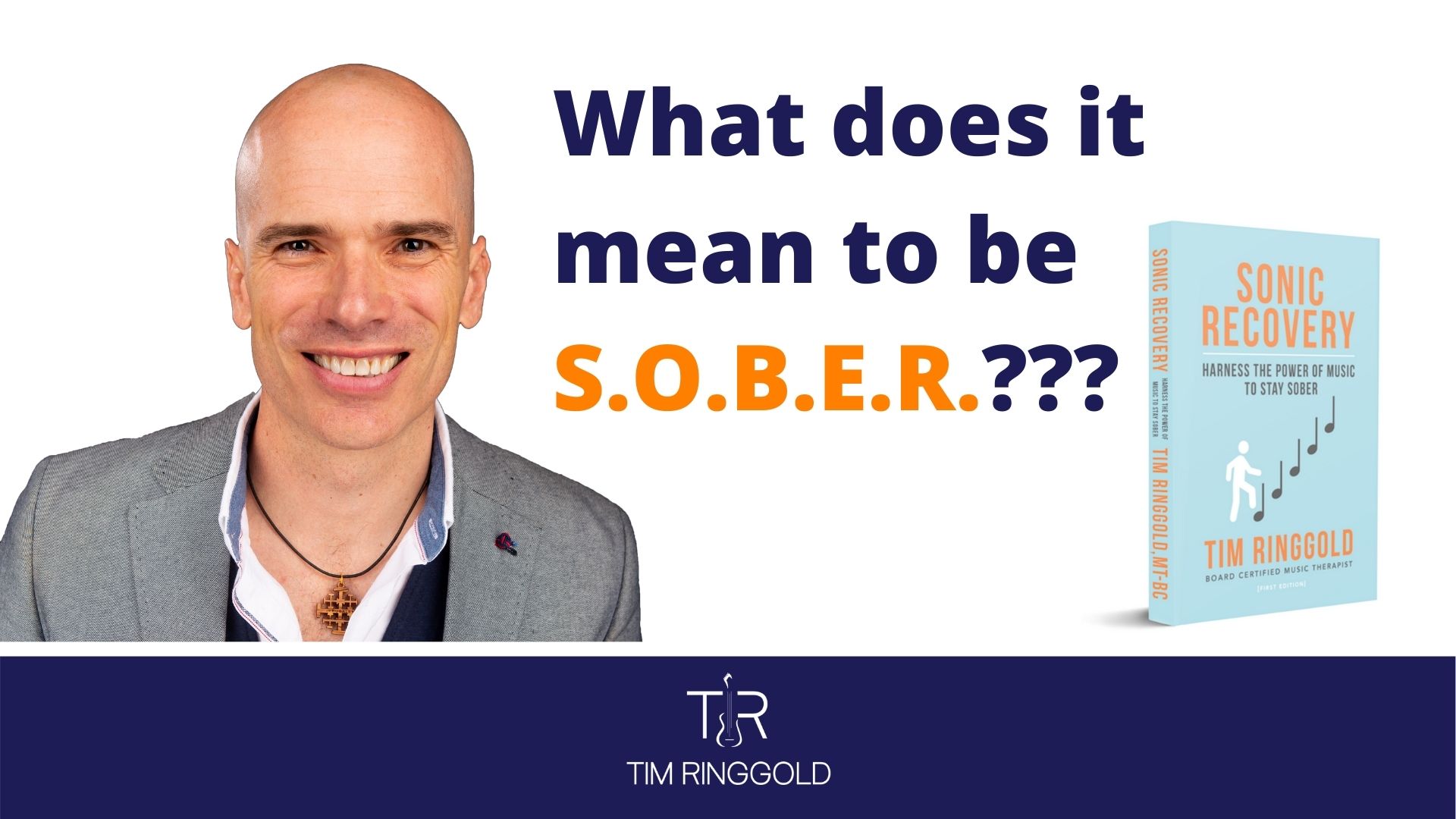What does it mean to be S.O.B.E.R.? – S: Stay Present

This is the first video and post in a series focusing on what I call my S.O.B.E.R. method that I outline in my book, Sonic Recovery: Harness the Power of Music to Stay SOBER. This week we focus on the “S” in SOBER, which stands for – Stay Present.
S = Stay Present
Clinical Outcome: “Clients will engage in active music-making to increase present moment awareness.”
The goals of music therapy in the treatment of addiction are useful goals for all of us to optimize our own wellness. So, whether you are someone working your own recovery program, or a family member or clinician of someone working a recovery program, these are for you.
The first goal that I work on is increasing present moment awareness. What does that mean? It was Deepak Chopra’s quote, “You are your attention – meaning you are what you attend to,” that really helped me understand the importance of where we are in time, rather than in space. There are three places you can locate your attention in time: The past, present, and the future.
Of course, all move between these three ‘time zones’ throughout the day, and that is normal and natural. Staying in the past or the future for any longer than a moment or two is not conducive to anyone, but especially a person struggling with an addiction.
Let’s explore why.
Our Attention
When our attention drifts to the future and remains there, it might bump into two particular emotional states known as fear and anxiety. These states can cause a stress response in the brain. Questions like, “What’s going to happen if…?” or, ”What’s going to happen when…?” are unknowable questions. The challenge is that we like to think we know the answers.
In Drs. Daniel Amen and David Smith’s book on addiction, Unchain Your Brain, they call this ‘mind reading.’ The teens I work with like to call it ‘future tripping.’ We are so sure that we know the outcome of a situation that we actually live into that outcome even though it hasn’t happened anywhere except in our brain. It seems like the more past we have with a person, situation, or event, the better the mind-reader we think we are about what they’re going to do or not do in the future, or how they’re going to react. Of course, we have no idea, and that’s why things like the fear inventory of the fourth step of The Twelve Steps is a fascinating activity to undertake.
I remember reading my fourth step fear inventory a year after I wrote it, and I was utterly shocked at what I had written down. Some of the things that were in my head were absolutely ludicrous. Yet, I was relating to them like they could and probably would happen in the near future. Those fears weren’t a possibility. They weren’t even a probability. They ‘were’ a certainty. I use inverted commas around the word ‘were’ because it only occurred as a certainty. That disconnection between what we think ‘is’ versus how something is occuring creates false realities in our head that we end up acting upon.
The Past is a Dangerous Place to Hang Out
Conversely, The Past is no place for someone recovering from addiction to hang out, either. The big four stressful states that reside there are shame, resentment, guilt, and regret. These states occur in some version of the following:
- I shouldn’t have done something I did
- I should’ve done something I didn’t
- He, she, it, they shouldn’t have done something they did
- He, she, it, they should’ve done something they didn’t
How Music Making Helps Us Stay Present
Watch the video below to see how music can help you in your recovery, by building skills to help you stay present.

